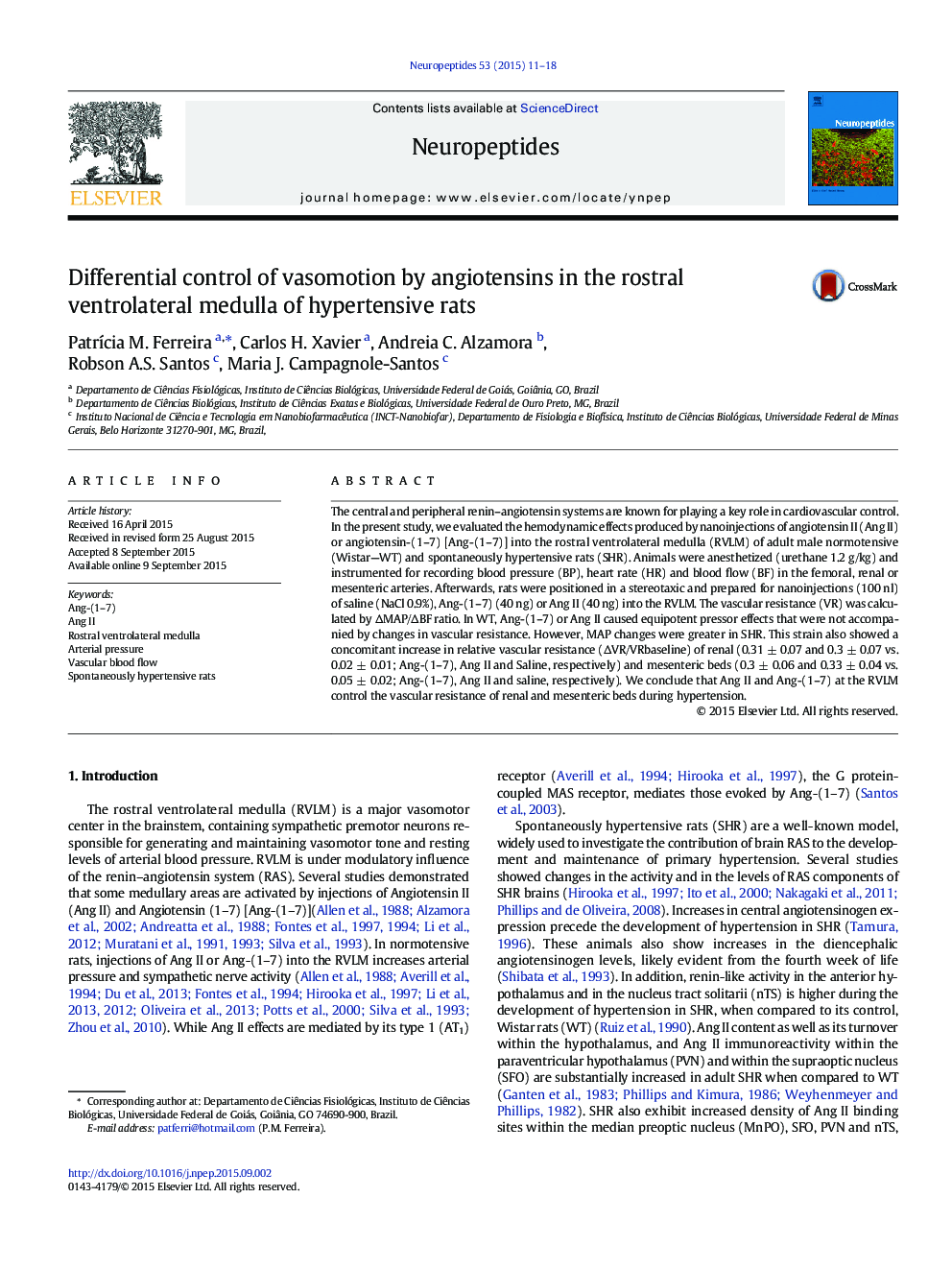| کد مقاله | کد نشریه | سال انتشار | مقاله انگلیسی | نسخه تمام متن |
|---|---|---|---|---|
| 2808008 | 1569069 | 2015 | 8 صفحه PDF | دانلود رایگان |
• Ang II and Ang-(1–7) at the RVLM control the vascular resistance in the renal and mesenteric beds during hypertension.
• Ang II and Ang-(1–7) at the RVLM produced equipotent cardiovascular responses during hypertension.
• Pressor responses produced by angiotensins in the RVLM depend on peripheral vascular resistance, but not cardiac output.
The central and peripheral renin–angiotensin systems are known for playing a key role in cardiovascular control. In the present study, we evaluated the hemodynamic effects produced by nanoinjections of angiotensin II (Ang II) or angiotensin-(1–7) [Ang-(1–7)] into the rostral ventrolateral medulla (RVLM) of adult male normotensive (Wistar—WT) and spontaneously hypertensive rats (SHR). Animals were anesthetized (urethane 1.2 g/kg) and instrumented for recording blood pressure (BP), heart rate (HR) and blood flow (BF) in the femoral, renal or mesenteric arteries. Afterwards, rats were positioned in a stereotaxic and prepared for nanoinjections (100 nl) of saline (NaCl 0.9%), Ang-(1–7) (40 ng) or Ang II (40 ng) into the RVLM. The vascular resistance (VR) was calculated by ΔMAP/ΔBF ratio. In WT, Ang-(1–7) or Ang II caused equipotent pressor effects that were not accompanied by changes in vascular resistance. However, MAP changes were greater in SHR. This strain also showed a concomitant increase in relative vascular resistance (ΔVR/VRbaseline) of renal (0.31 ± 0.07 and 0.3 ± 0.07 vs. 0.02 ± 0.01; Ang-(1–7), Ang II and Saline, respectively) and mesenteric beds (0.3 ± 0.06 and 0.33 ± 0.04 vs. 0.05 ± 0.02; Ang-(1–7), Ang II and saline, respectively). We conclude that Ang II and Ang-(1–7) at the RVLM control the vascular resistance of renal and mesenteric beds during hypertension.
Journal: Neuropeptides - Volume 53, October 2015, Pages 11–18
